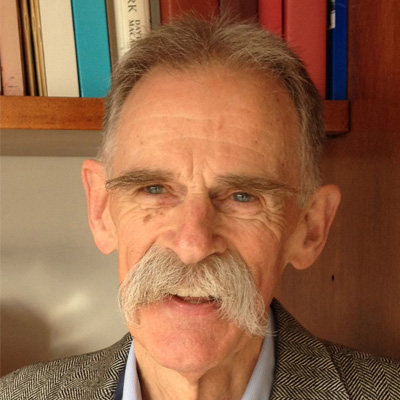Identifying the responsibility of neurotransmitter switching on behavioral change
Neurotransmitter switching is a novel form of brain plasticity not previously appreciated in the adult mammalian brain. It involves the switching of molecules expressed by neurons, which changes the whole function of those neurons. Dr. Nicholas Spitzer of the Neurobiology Department at the University of California, San Diego is investigating the involvement of transmitter switches as a potential cure for a number of neurological disorders. It is important to understand what triggers this switching and where in the brain it is expressed, both in the normal brain and in brains afflicted with a range of different neurological disorders, so that potential therapies can be derived. Investigating the specifics of transmitter switching in the adult brain is important for a number of reasons. First, humans have an inherent curiosity for understanding how things work, and finding new kinds of brain plasticity gives insight into how the brain responds to changes in the environment. Secondly, a better understanding of a process makes us more prepared to fix it should it break, and the same is the case with the brain. Lastly, it is hypothesized that although transmitter switching is often beneficial for adaptation to one's environment, it can, and sometimes does, go awry. Research has shown that a simple treatment, such as phototherapy, or exposure to bright light, can cure Seasonal Affective Disorder (SAD), a clinical form of depression that may result from unwanted neurotransmitter switching. Investigating transmitter switching that regulates changes in behavior will provide valuable insight into how normal brains function, and how brains afflicted with a neurological disease malfunction. Dr. Spitzer's lab is one of a very small number of labs investigating this phenomenon and studying the molecular mechanism by which it occurs, and could very likely develop inexpensive and non-invasive treatments for diseased brains.
As a Distinguished Professor of Neurobiology at the University of California, San Diego, Dr. Nicholas Spitzer's research is focused on neurotransmitter switching in the adult brain and in the developing nervous system. Within the brains of all animals, nerve cells (neurons) communicate with one another in an unusual way: through the manufacturing of chemical molecules called neurotransmitters, which are released when the neuron is electrically activated and which bind to the receptors of other neurons to either stimulate or inhibit neural activity. Transmitter switching is the process by which neurons will release different neurotransmitter molecules in response to changes in the environment. The switch changes the function of a particular neuron or groups of neurons, which significantly alters the way information is communicated through the brain. This process, which is a form of neuroplasticity, is generally good, allowing the brain to respond more effectively to the usual stimuli of its environment, and, as expected, causes changes in behavior of the organism. Two other major kinds of neuroplasticity have been well studied previously; the first involves changes in strength of connections between nerve cells, while the second entails changes in the number of connections between neurons. Strengthening and weakening, or making or losing appropriate synaptic connections allows tailoring of brain function to meet the demands of the organism. Studying the process of transmitter switching, a newly recognized form of brain plasticity, is important to understanding how the brain functions normally, but also has potential applications in uncovering what goes wrong in the brain of individuals diagnosed with neurological disorders.
Dr. Spitzer's current research projects study neurotransmitter switching and how the ensuing changes in neuronal activity affect the brain:
- Parkinson's disease and Deep Brain Stimulation: Parkinson's disease is a debilitating neurological disorder characterized by many different components, notably involuntary and sometimes violent tremors and cognitive problems. Deep brain stimulation is a technique that has been developed as a clinical approach for treatment of Parkinson's, but is also proving effective for OCD, Tourette syndrome, depression, and schizophrenia. It is an invasive technique that involves drilling a hole into the skull of the patient and implanting an electrode directly into the brain, which in turn introduces an electrical current controlled in both length (duration) and frequency (number of impulses). Research has proven that it is effective in controlling tremors in Parkinson's patients: turning it on stops the tremors; turning it off allows the tremors to return. Dr. Spitzer is testing the hypothesis that sustained DBS drives transmitter switching, and that switching of neurotransmitters is directly responsible for providing long-term therapy for patients.
- Obesity: In the US and in many other countries, obesity has been classified as a neurological disorder, reflecting the public's perception that it is a serious health problem. While obesity stresses a number of organ systems in the body, Dr. Spitzer is exploring its effect on the brain and the nervous system. He is testing the hypothesis that the conditions that lead to obesity cause transmitter switching that alters the behavior of obese individuals. Dr. Spitzer puts mice in two groups, a control group, and an experimental group that is fed a high-fat diet (comparable to the fast-food diet many Americans now consume). He examines the brains of the mice and finds evidence of transmitter switching in the experimental animals within the arcuate nucleus of the hypothalamus, an area of the brain responsible for controlling appetite. An increase in the number of neurons expressing a particular neurotransmitter could explain the behavioral changes consequent to excess eating. Confirming the responsibility of transmitter switching in mice known to show a change in eating behavior would enable the development of therapies intended to help people with obesity.
- Motor learning: Many people are aware that the practicing of an activity, be it a sport or simply running, results in an increase in coordination and the sequencing of movements, rather than simply increased muscle mass. Dr. Spitzer is interested in identifying the changes in the brain that are responsible for this skill acquisition. He is capitalizing on rodents' (mice and rats) natural love for running by comparing two groups, a control group and one that has access to a running wheel. The rodents that run show transmitter switching in the hippocampus, an area of the brain where memories are initially stored. This is an interesting correlation and Dr. Spitzer is investigating the function of neurons in the hippocampus that have acquired a novel neurotransmitter. He hypothesizes that the new transmitter is likely improving the coordination of limbs in running mice, and is eager to test this further.
Bio
Dr. Spitzer humbly attributes a great deal of his success to the inspiring and influential mentors who have guided him along his career. In high school, Dr. Spitzer's math teacher, Mr. Maynard, and his chemistry and physics teacher, Dr. Hammond, sparked an early interest in science and set a fire under Dr. Spitzer for pursuing a career in the hard sciences. During his undergraduate studies at Harvard University, he enrolled in an introductory biology course taught by Prof. George Wald, the Nobel Laureate known for his pathbreaking work demonstrating the role of Vitamin A in the formation of the visual pigment in the eyes. Dr. Wald was an amazing lecturer and was responsible for influencing seven students in just that one class to pursue medical degrees and/or Ph.D.'s in neuroscience. Dr. Spitzer approached Prof. John Dowling about performing research in his lab and Prof. Dowling opened a position for him. It was at that point that Dr. Spitzer was hooked on the scientific approach, and it was easy to "reel him in" to a career as a researcher. In graduate school, Prof. Stephen Kuffler, referred to by many as the "Father of Modern Neuroscience," as chair of the newly formed Harvard Neurobiology Department, the first of its kind in the country, offered Dr. Spitzer coveted and invaluable experience and education in the field of neurobiology. The amazing work Prof. Kuffler performed was met with admiration and great respect, and the tremendous advances in the field that came out of his lab only furthered Dr. Spitzer's passion. Lastly, Prof. Ricardo Miledi was an inspiration while Dr. Spitzer was performing his postdoctoral research in London, encouraging him to approach problems from new perspectives. Dr. Spitzer has immense respect for his mentors, as well as all of those in the scientific community who are able to recognize talent in the younger generations and meet the challenges of teaching with enthusiasm and contagious energy.
Dr. Spitzer has taken his experiences in academia and translated them into his own research. His initial goal was to understand the origins of electrical excitability - how neurons at embryonic stages come to develop the ability to generate action potentials (electrical impulses) that they use for signaling information in the brain. He hypothesized that early forms of excitability within the developing nervous system could be influential in shaping the differentiation of neurons during development. This led to the discovery of a novel form of excitability, dependent on the influx of calcium ions, which turned out to regulate the respecification of the neurotransmitters that neurons use to signal to one another. From there it was logical to investigate the possibility of neurotransmitter switching in the adult brain.
Dr. Spitzer has pursued his research over forty years at UCSD, with each offering increased enjoyment. During the majority of his career, he has served as a fundamental neuroscientist, studying basic cellular and molecular biology of the nervous system, with no thought of the clinical aspects of neuroscience or translational medicine. Within the last few years, Dr. Spitzer has had the remarkable opportunity to "connect the dots" and explore the clinical impact fundamental neuroscience can have. It is personally inspiring to be able to return some of the blessings life has offered Dr. Spitzer, and the opportunity of potentially developing successful treatments for neurological disorders drives him today.
His team includes one research scientist, four postdocs and two grad students, plus several undergrads and a lab manager. Together, they collaborate with the lab of Professor Darwin Berg at UC San Diego, and with colleagues in Melbourne, Australia, Maastricht, Netherlands and Hangzhou, China.
In the News
UT San Diego
UT San Diego
The Atlantic
Publications
Videos
Awards
Editor-in-Chief since 2011
BrainFacts.org
Co-Chair, Chair, Public Education & Communication Committee
Society for Neuroscience
Editorial Board since 2006
Neural Development
Member since 2002
American Academy of Arts and Sciences
2011 Fellow
American Association for the Advancement of Science
Councilor, 2000-2004
Society for Neuroscience


